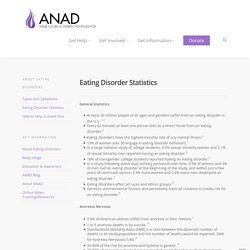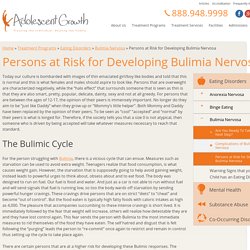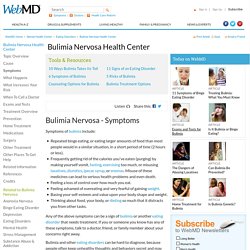

Eating Disorders Statistics - National Association of Anorexia Nervosa and Associated Disorders. General statistics: At least 30 million people of all ages and genders suffer from an eating disorder in the U.S.

Every 62 minutes at least one person dies as a direct result from an eating disorder.Eating disorders have the highest morality rate of any mental illness.13% of women over 50 engage in eating disorder behaviors.In a large national study of college students, 3.5% sexual minority women and 2.1% of sexual minority men reported having an eating disorder.16% of transgender college students reported having an eating disorder.In a study following active duty military personnel over time, 5.5% of women and 4% of men had an eating disorder at the beginning of the study, and within just a few years of continued service, 3.3% more women and 2.6% more men developed an eating disorder.Eating disorders affect all races and ethnic groups.Genetics, environmental factors, and personality traits all combine to create risk for an eating disorder. Anorexia Nervosa: Bulimia Nervosa: “Diabulimia:” Risk Factors for Developing Bulimia Nervosa in Teens / Adolescents.
Today our culture is bombarded with images of thin emaciated girl/boy like bodies and told that this is normal and this is what females and males should aspire to look like.

Persons that are overweight are characterized negatively, while the “halo effect” that surrounds someone that is seen as thin is that they are also smart, pretty, popular, delicate, dainty, sexy and not at all greedy. For persons that are between the ages of 12-17, the opinion of their peers is immensely important. No longer do they aim to be “just like Daddy” when they grow up or “Mommy’s little helper”. Both Mommy and Daddy have been replaced by the opinion of their peers. To be seen as “cool” “accepted” and “normal” by their peers is what is longed for. The Bulimic Cycle For the person struggling with Bulimia, there is a vicious cycle that can ensue. There are certain persons that are at a higher risk for developing these Bulimic responses. Bulimia nervosa Risk factors. Factors that increase your risk of bulimia may include: Being female.

Girls and women are more likely to have bulimia than boys and men are. About Bulimia: Symptoms, Signs, Causes & Articles For Treatment Help. What is Bulimia?

Bulimia Nervosa is a psychological and severe life-threatening eating disorder described by the ingestion of an abnormally large amount of food in short time period, followed by an attempt to avoid gaining weight by purging what was consumed. Methods of purging include forced vomiting, excessive use of laxatives or diuretics, and extreme or prolonged periods of exercising. Often, in these binge/purge episodes, a woman or man suffering with this disorder will experience a loss of control and engage in frantic efforts to undo these feelings.
Jane Fonda discusses her recovery from bulimia. As posted by: Amanda de Cadenet Advertisement Advertisement Since he or she may have bingeing and purging episodes in secret, they are often able to conceal their disorder from others for extended periods of time. Bulimia Nervosa-Symptoms. Symptoms of bulimia include: Repeated binge eating, or eating larger amounts of food than most people would in a similar situation, in a short period of time (2 hours or less).

Frequently getting rid of the calories you've eaten (purging) by making yourself vomit, fasting, exercising too much, or misusing laxatives, diuretics, ipecac syrup, or enemas. Misuse of these medicines can lead to serious health problems and even death. Feeling a loss of control over how much you eat. Feeling ashamed of overeating and very fearful of gaining weight. Any of the above symptoms can be a sign of bulimia or another eating disorder that needs treatment. Bulimia and other eating disorders can be hard to diagnose, because people often keep unhealthy thoughts and behaviors secret and may deny that they have a problem. Other signs that a person may have bulimia Common signs that a person may have bulimia are when the person: Is very secretive about eating and does not eat around other people.